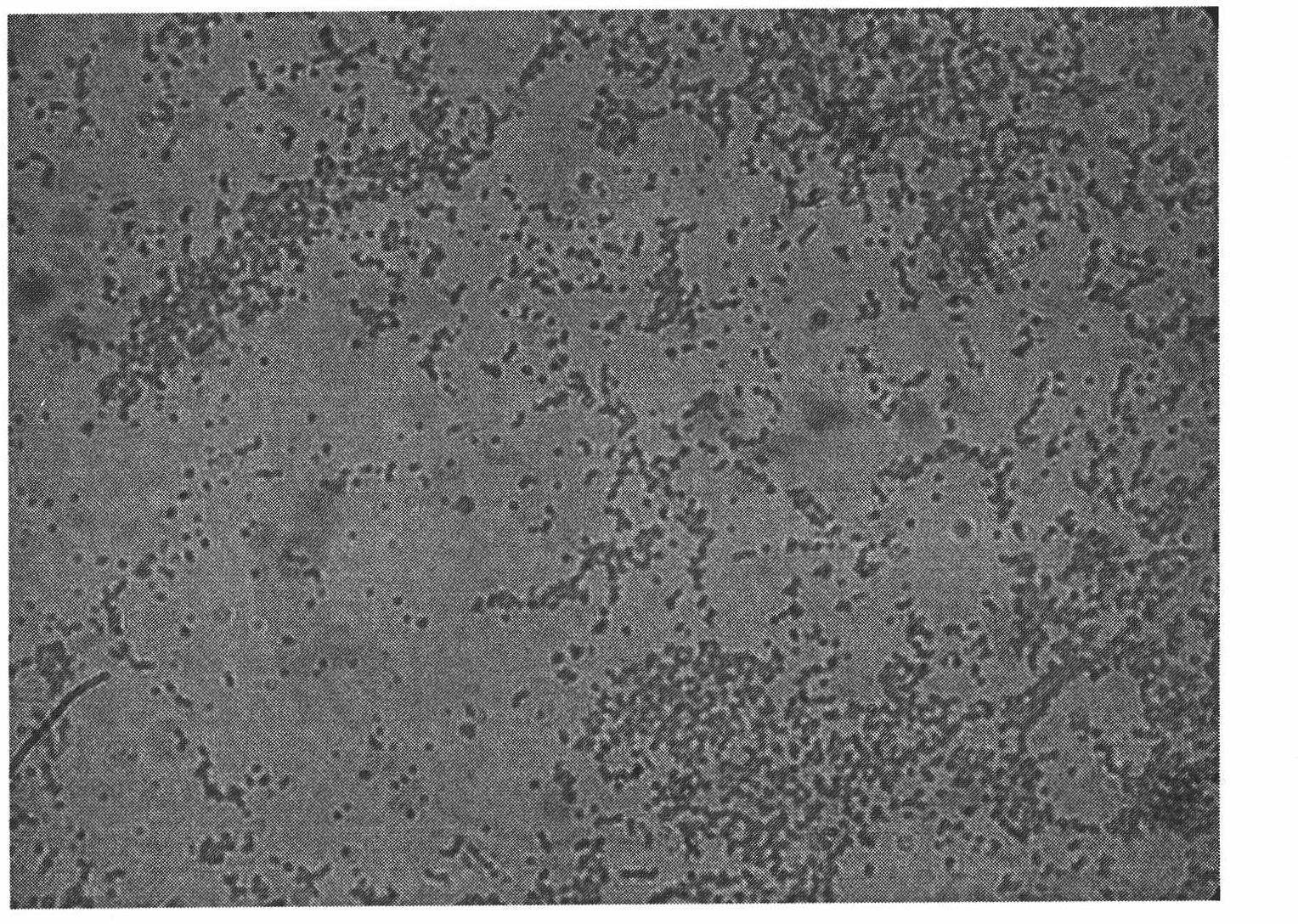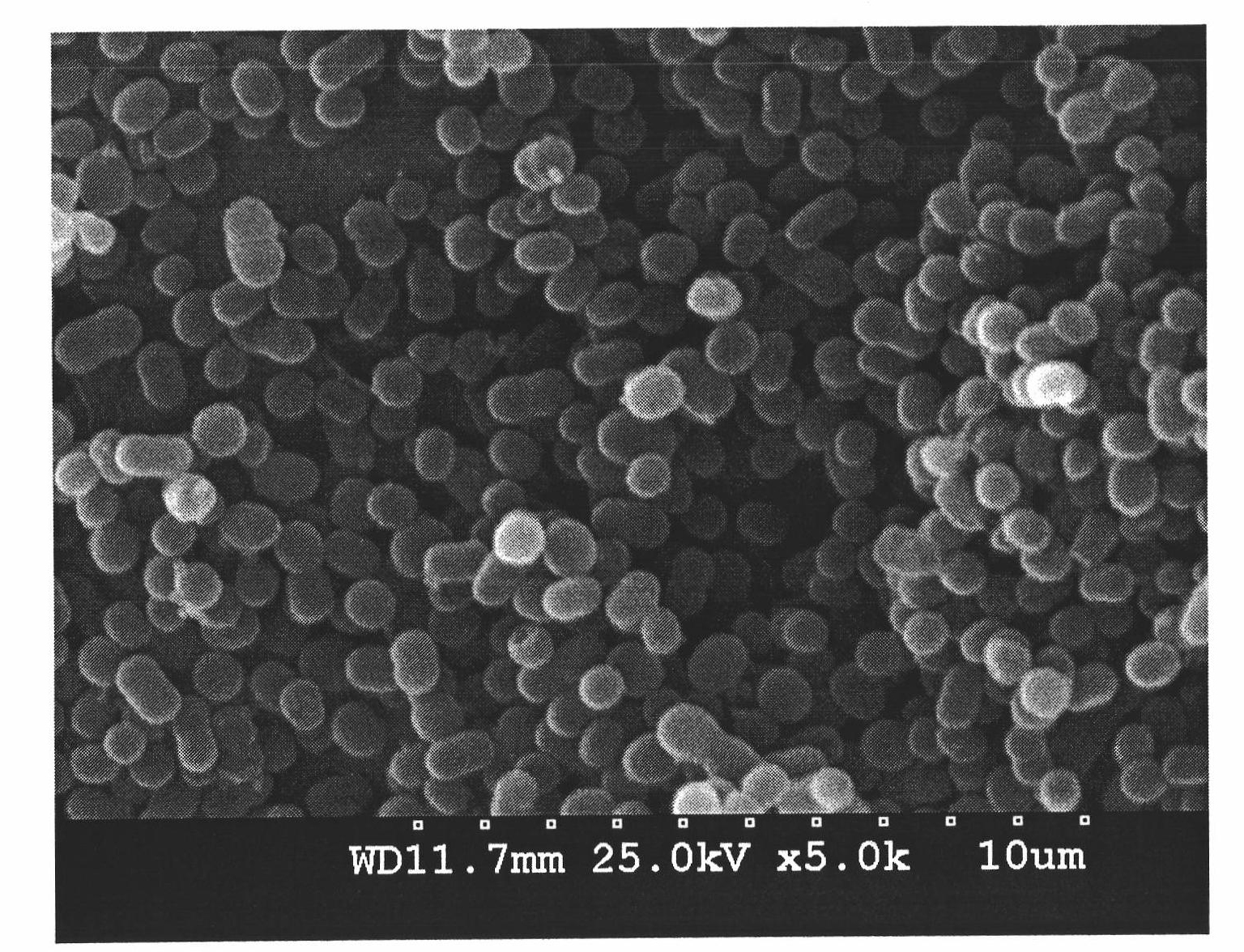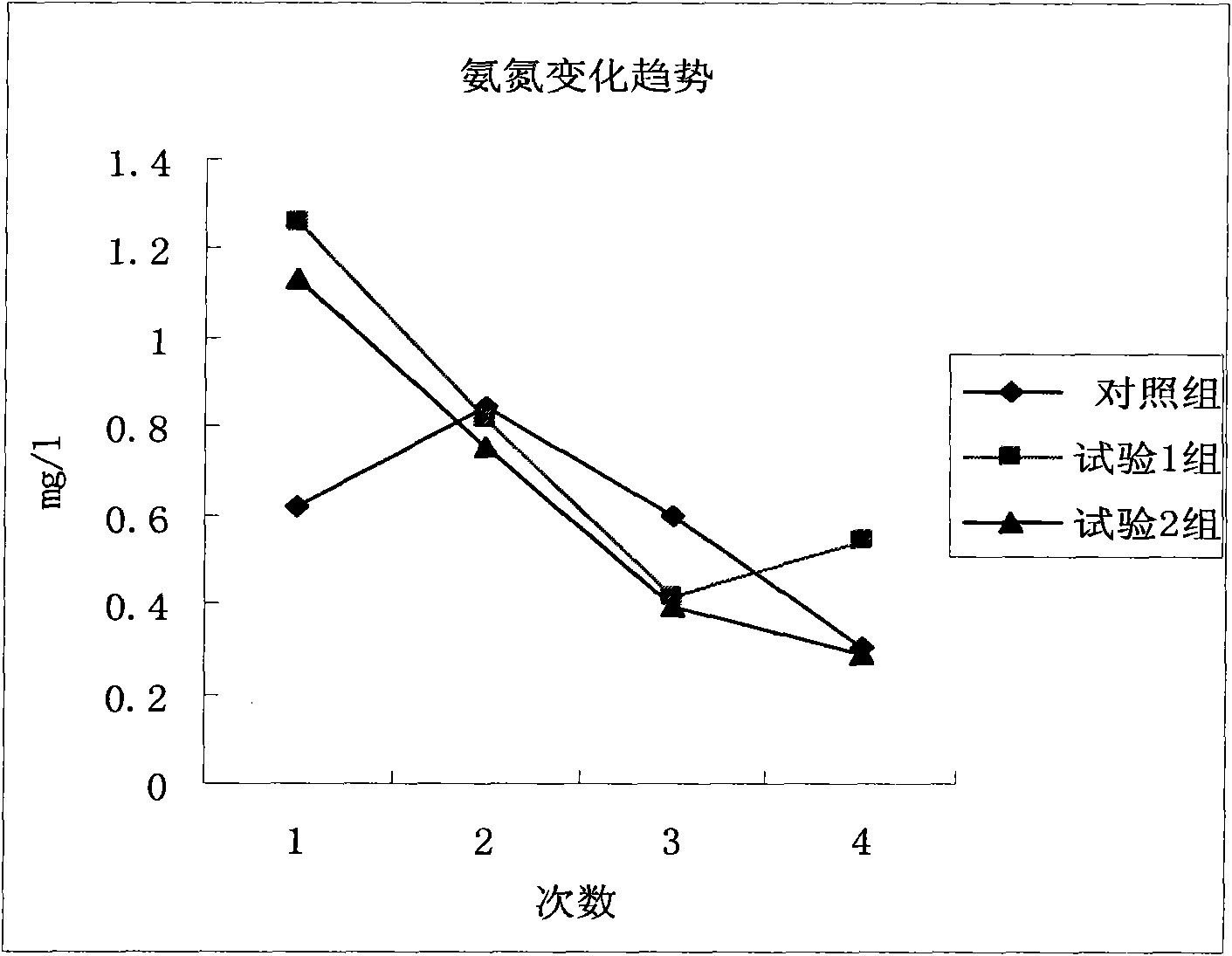Acinetobacter sp. and application of composite bacterial agent of acinetobacter species
A compound bacterial agent and bacillus technology, applied in the direction of bacteria, microorganism-based methods, water/sludge/sewage treatment, etc., can solve problems such as imperfections, accelerated organic matter decomposition speed, and inability to decompose and utilize, and achieve good results
- Summary
- Abstract
- Description
- Claims
- Application Information
AI Technical Summary
Problems solved by technology
Method used
Image
Examples
Embodiment 1
[0021] Collect water and sediment from eutrophication ponds, inoculate them into liquid basal medium, and cultivate them at 32-35°C with a shaker speed of 150r / min for 2 days. The ammonia nitrogen value in the water body is used as an indicator to significantly reduce ammonia nitrogen. The liquid culture mixed microorganisms were diluted and spread on the solid basic medium, the above operation was repeated twice, and a single colony with good growth was picked as the primary screening bacteria. Inoculate the primary screened strain in the liquid separation medium, and culture it for 3-4 days at 32-35°C with a shaker speed of 150r / min to measure the content of MC-LR and determine the ability of the strain to degrade MC-LR. Select the colony with obvious reduction of ammonia nitrogen and degrade MC-LR to a certain extent and purify twice to obtain the screened strain ZJTK-006.
[0022] Basal medium: Na 2 HPO 4 2.4g, KH 2 PO 4 2.6g, NaCl0.328g, MgSO 4 ·7H 2 O 0.5g, CaCl 2...
Embodiment 2
[0026]The present invention isolates a strain of Acinetobacter sp. ZJTK-006, and identifies it according to its morphological characteristics and phylogenetic analysis based on 16S rDNA sequence. It is characterized in that it is a pure strain isolated and purified from the bottom mud of eutrophic ponds, its 16SrDNA has the sequence of SEQIDNo.1, and it is stored in the General Microbiology Center of the China Microbiological Culture Collection Management Committee, a preservation unit designated by the Chinese Patent Office. The number is: CGMCCNo.3452.
[0027] (1) Morphology and physicochemical characteristics of Acinetobacter sp. ZJTK-006
[0028] Morphological characteristics:
[0029] Brevibacterium subspheroidus, 0.5-1.0μm×0.6-1.6μm, no spores, negative Gram stain, occasionally difficult to decolorize, (see picture); the colony is milky white, round, with neat edges.
[0030] Physical and chemical characteristics:
[0031] The strain is obligately aerobic, positive f...
Embodiment 3
[0040] Bacillus subtilis culture conditions:
[0041] Medium: beef extract 10g / L, peptone 5g / L, NaCl10g / L, PH 7.2-7.5,
[0042] Culture temperature: 32-35 ℃ constant temperature shaking culture.
[0043] Culture conditions of Rhodopseudomonas palustris:
[0044] Medium: Sodium Propionate 1.0g, Ammonium Sulfate 1.0g, Potassium Dihydrogen Phosphate 0.5g, Dipotassium Hydrogen Phosphate 0.5g, Magnesium Sulfate 0.2g, Sodium Chloride 0.5g, Yeast Extract 0.1g, Water 1000ml, PH6.5 -7.2
[0045] Culture temperature: 33-35°C, light 3000Lx, static culture for 5-7 days.
[0046] Preparation of microbial compound bacterial agent:
[0047] The strains Acinetobacter sp. ZJTK-006, Bacillus cereus As. 1.1414, and Rhodopseudomonas palustris 1.2181 were inoculated in their respective media according to the media formula, and cultured separately to make The number of each bacteria ≥ 1.0×10 9 cfu / ml, mixed uniformly according to the volume ratio of the cultures at a volume ratio of 1:1:3 to ...
PUM
 Login to View More
Login to View More Abstract
Description
Claims
Application Information
 Login to View More
Login to View More - R&D
- Intellectual Property
- Life Sciences
- Materials
- Tech Scout
- Unparalleled Data Quality
- Higher Quality Content
- 60% Fewer Hallucinations
Browse by: Latest US Patents, China's latest patents, Technical Efficacy Thesaurus, Application Domain, Technology Topic, Popular Technical Reports.
© 2025 PatSnap. All rights reserved.Legal|Privacy policy|Modern Slavery Act Transparency Statement|Sitemap|About US| Contact US: help@patsnap.com



